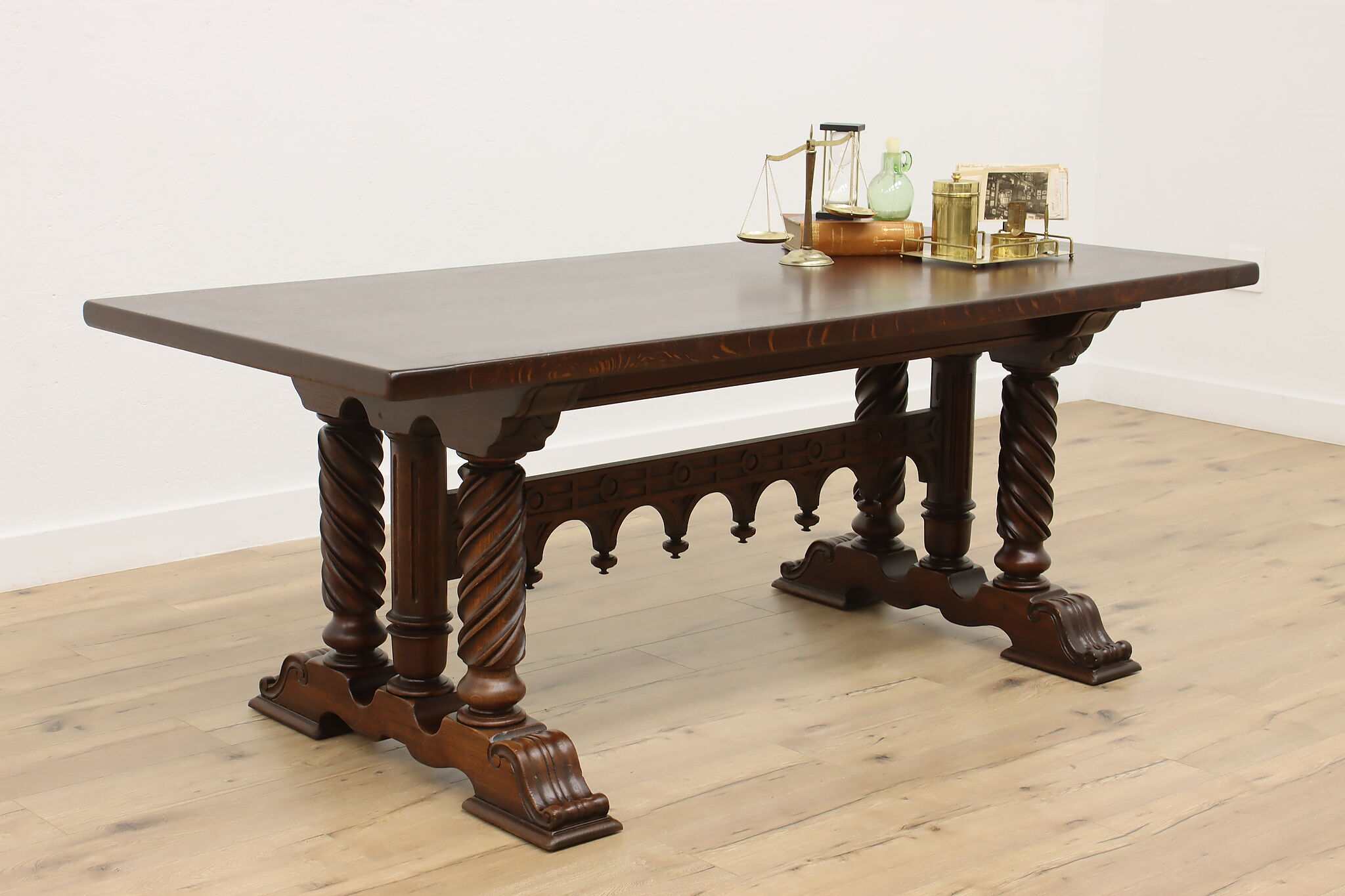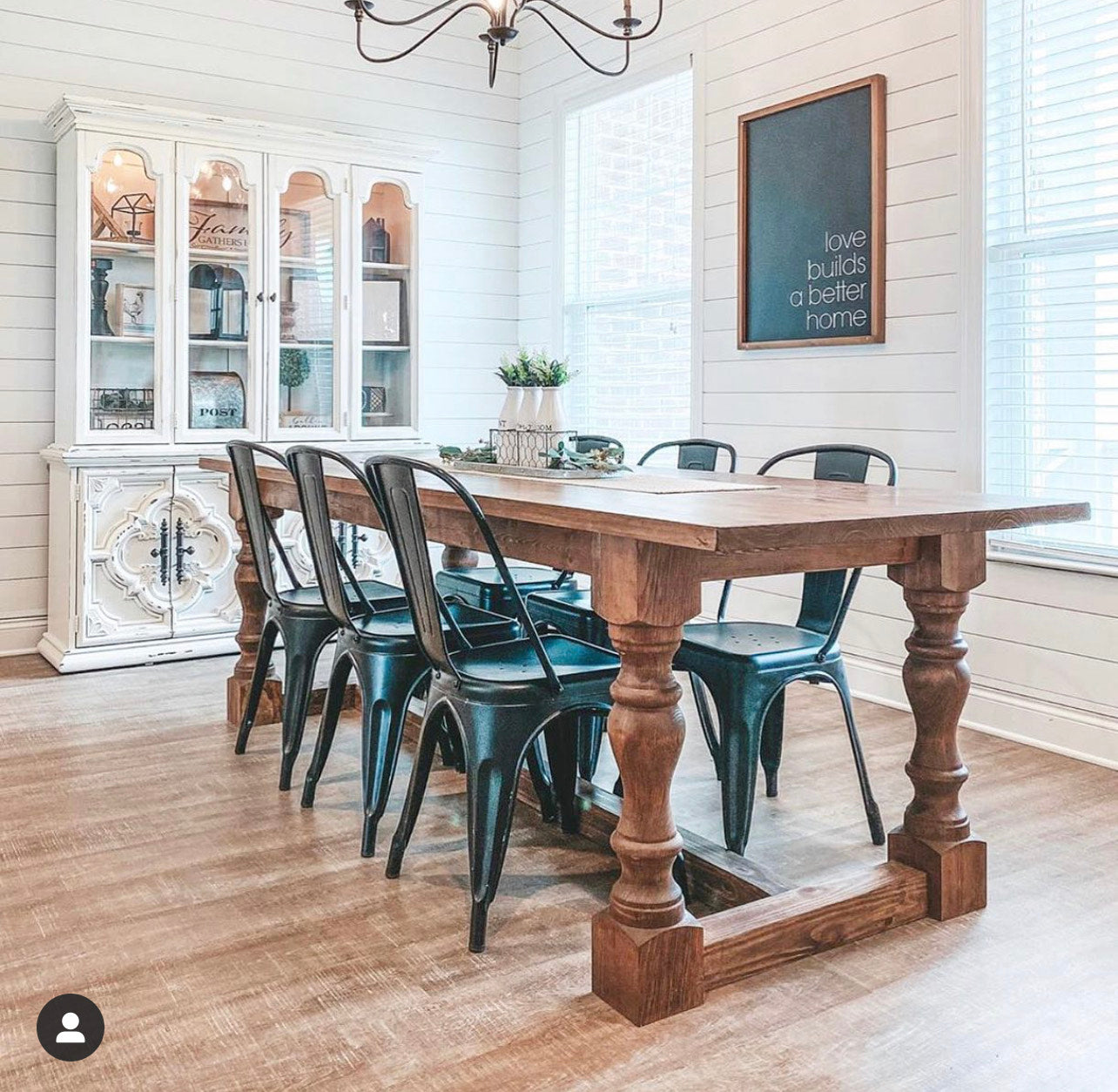Tips for Installing Dining Room Table Legs for a Modern Look
Tips for Installing Dining Room Table Legs for a Modern Look
Blog Article
How to Select the Perfect Eating Space Table Legs for Your Home Design
Selecting the excellent eating room table legs is a nuanced process that calls for mindful consideration of numerous aspects, including your room restraints, visual choices, and practical demands. The interplay between styles, measurements, and materials can dramatically affect the atmosphere of your eating location, making it essential to approach this decision carefully.
Assess Your Dining Area
Analyzing your dining area is important for selecting the right table legs that complement both aesthetics and performance. Begin by determining the dimensions of your dining location, consisting of ceiling height, flooring area, and proximity to other furnishings. This info will certainly assist determine the suitable size and height of your dining table, which directly influences the selection of table legs.
Following, consider the design and layout of your eating space. As an example, an open-concept design might take advantage of table legs that use visual lightness, such as slender metal or acrylic alternatives. Alternatively, a more traditional setting may call for sturdy wood legs that supply a sense of permanence.
Review the existing shade scheme and materials in your eating area. Integrating the table legs with these components develops a natural look that improves the total decor.
Ultimately, a comprehensive evaluation of your eating area will assist you in making an informed choice, making sure that your table legs not just boost the visual appeal but also serve useful purposes.
Consider Your Design Preferences
When selecting eating room table legs, it is vital to assess your personal design preferences, as they dramatically affect the overall visual of your eating area. Your choice of table legs can either complement or comparison with existing decoration, making it vital to align them with your preferred interior decoration style.
If your home leans towards a contemporary aesthetic, think about streamlined metal or minimalist wooden legs that give a clean, clean look. For an extra conventional strategy, luxuriant wood legs with elaborate carvings can include a touch of style and refinement. Industrial designs benefit from robust, resources such as reclaimed timber and steel combinations, reflecting a rugged appeal.
Additionally, farmhouse and rustic designs usually prefer tough, chunky legs that evoke a feeling of heat and comfort. Alternatively, if your decoration is eclectic, you may choose unconventional shapes or a mix of products to create visual rate of interest.

Evaluate Product Options
The choice of material for dining area table legs plays a critical duty in both sturdiness and aesthetic charm. Typical products consist of timber, steel, and composite choices, each offering unique qualities that can influence the total look and longevity of your table.
Timber is a classic choice, understood for its heat and versatility. Hardwoods like oak and walnut provide remarkable toughness and can be ended up in different stains to match any kind of design. Nevertheless, softwoods like want are much more susceptible top article to scrapes and dents, making them much less excellent for high-traffic areas.
Metal legs, typically crafted from steel browse around here or light weight aluminum, emanate modernity and commercial charm. They are immune and very resilient to wear, making them ideal for families with youngsters or constant celebrations (dining room table legs). Additionally, steel can be ended up in numerous shades, improving the modification opportunities
Composite products, such as MDF or laminate, offer affordability and varied layouts. While commonly less resilient than strong timber or steel, they can still offer a fashionable appearance and are typically very easy to preserve.
Inevitably, the product you select need to straighten with your way of life, aesthetic preferences, and the level of usage your table will certainly experience.
Determine Elevation and Dimension
Selecting the proper elevation and size for your eating space table is important for both capability and convenience. The typical elevation for dining tables typically varies from 28 to 30 inches, enabling sufficient legroom for a lot of individuals when seated. Nevertheless, it is crucial to think about the measurements of your dining space and the types of chairs you prepare to use.

Moreover, take into consideration the percentages of your dining space. A bigger table in a sizable location can develop a grand setting, while a smaller sized table works well in more intimate settings. Ultimately, the ideal height and size will balance with your overall decor and enhance the eating experience for you and your guests.
Explore Modification Possibilities

Furthermore, the style of the legs can be personalized to fit various designs, such as rustic, modern-day, or commercial. Conical legs can evoke a mid-century contemporary feel, while chunky, block-style legs might resonate with standard or farmhouse design.
House owners can likewise check out color coatings, from natural timber stains to paint, allowing them to match or comparison with the table top and surrounding decoration.
Moreover, leg height can be gotten used to accommodate particular seating setups or personal preferences, improving both convenience and performance.
Finally, distinct embellishments, such as carvings or ornamental brackets, can additionally customize the table legs, making the dining experience not simply a dish yet a statement piece in the home. By considering these personalization choices, property owners can develop a dining space table that absolutely shows their originality.
Verdict
Choosing the excellent eating area table legs requires cautious consideration of different variables, consisting of the measurements of the dining room, design preferences, product longevity, and desired elevation. Personalization options even more enhance the capacity to achieve a natural visual that enhances the general style. By systematically evaluating these components, property owners can make certain that the picked table legs not just fulfill functional needs however also add favorably to the dining experience and ambiance of the home.
Picking the optimal eating space table legs is a nuanced process that requires careful consideration of various aspects, including your space restrictions, visual preferences, and useful demands.Assessing your dining space is crucial for picking the right table legs that match both aesthetic appeals and functionality.When figuring out size, determine the location where the table will certainly be positioned to guarantee it fits comfortably, permitting for at the very least 36 inches of clearance around the table for very easy movement. A bigger table in a sizable area can create a grand ambiance, while a smaller sized table functions well in more intimate setups.Selecting the perfect eating space table legs needs careful factor to consider of various aspects, consisting of the dimensions of the dining room, design choices, material sturdiness, and desired elevation.
Report this page